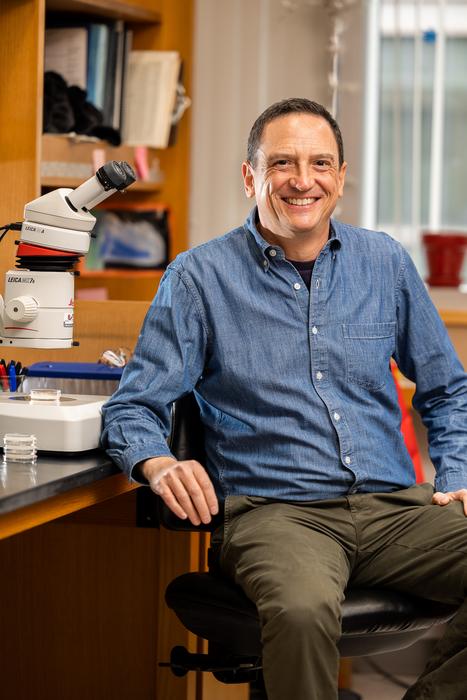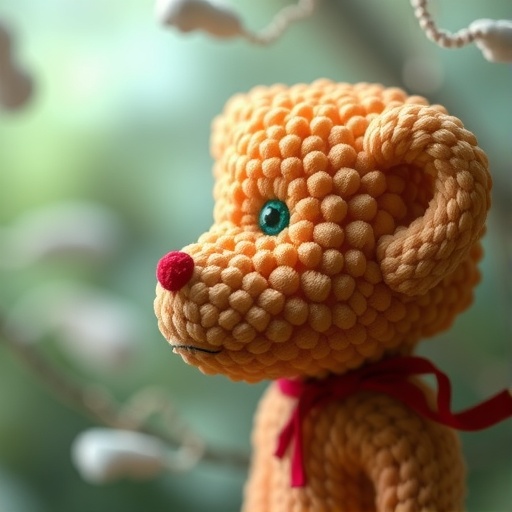A piece of rotting fruit is likely covered in hundreds if not thousands of microscopic roundworms, including C. elegans—a popular experimental model system for studying neurogenetics. With a lifespan of only a few weeks, C. elegans must reproduce quickly and often. The species is made up of hermaphrodites and males. The hermaphrodites have female bodies, can self-fertilize, and can mate with males. Recent research from of the Portman Lab at the Del Monte Institute for Neuroscience at the University of Rochester, found the males do not mate indiscriminately—they are selective about things like age, mating history, and nutrition.

Credit: John Schlia Photography
A piece of rotting fruit is likely covered in hundreds if not thousands of microscopic roundworms, including C. elegans—a popular experimental model system for studying neurogenetics. With a lifespan of only a few weeks, C. elegans must reproduce quickly and often. The species is made up of hermaphrodites and males. The hermaphrodites have female bodies, can self-fertilize, and can mate with males. Recent research from of the Portman Lab at the Del Monte Institute for Neuroscience at the University of Rochester, found the males do not mate indiscriminately—they are selective about things like age, mating history, and nutrition.
“We have been aware of many of the mating cues this species uses, but this is the first time we have been able to look at them together to learn more about what they tell a male about a potential mate,” Doug Portman, PhD, professor of Biomedical Genetics said. “Assessing a mate’s characteristics seems to be something that only the male does. Understanding sex differences in C. elegans gives us important insight into how genes influence the function of neurons and circuits to guide innate behaviors—like choosing a mate.”
C. elegans is an invaluable tool to neuroscience research. Scientists have identified all of the roundworm’s neurons—there are only a few hundred of them—and the connections between its neurons have also been mapped, providing a model for understanding how neuronal circuits work in humans. It is well understood that mating is a priority for male C. elegans. Previous research out of the Portman lab found male C. elegans will suppress the ability to locate food in order to find a mate.
In a study out today in Current Biology, the Portman lab conducted experiments to observe how roundworms in petri dishes choose between potential mates. They discovered that the male worms used diverse chemical (pheromones) and physical (touch) signals to determine the sex, age, nutritional health, and mating history of the hermaphrodites. Researchers found male worms can determine a hermaphrodite’s nutritional status—whether it is healthy or food-deprived—and whether it has previously mated. When given a choice, the males showed preference toward hermaphrodites that have not previously mated with another male and are nutritionally healthy. However, once a hermaphrodite is a few days old—approaching middle age for a worm—it puts out a powerful sex pheromone that attracts males over long distances. That is because it starts to run out of its own sperm, so finding a mate becomes a more important.
“Each time we learn more about the role genetic sex plays in neural circuits to generate different behavioral outcomes, and the neuronal mechanisms that underlie them, we come closer to understanding the role that genes play in sculpting innate behavior,” Portman said. “We now aim to better understand how the male’s neural circuits integrate different mating cues and arrive at a decision about what to do.”
Additional authors include first author Jintao Luo, PhD, of Xiamen University, Chance Bainbridge and Renee Miller of the University of Rochester, and Arantza Barrios of the University College London. This research was supported by the National Institute of Health, the Fundamental Research Funds for the Central Universities, Natural Science Foundation of Fujian Province, and the Leverhulme Trust.
Journal
Current Biology
DOI
10.1016/j.cub.2024.02.036
Article Publication Date
11-Mar-2024




